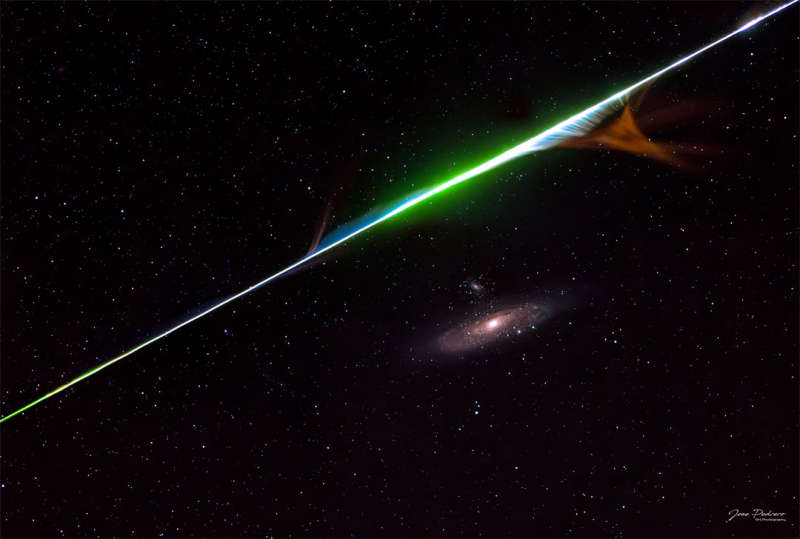Credit & Copyright: Jose Pedrero
Explanation:
It came from
outer space.
It -- in this case a
sand-sized bit of a
comet nucleus -- was likely ejected many years ago from
Sun-orbiting
Comet Swift-Tuttle, but then continued to orbit the Sun alone.
When the Earth crossed through this orbit, the piece of comet debris impacted the
atmosphere of our fair planet
and was seen as a meteor.
This meteor deteriorated, causing gases to be emitted
that glowed in colors emitted by its component elements.
The featured image was taken last week from
Castilla La Mancha,
Spain,
during the peak night of the
Perseids meteor shower.
The picturesque meteor streak happened to appear in the
only one of 50 frames that also included the
Andromeda galaxy.
Stars dot the frame, each much further away than the meteor.
Compared to the stars, the
Andromeda galaxy (M31) is, again, much further away.
1999 2000 2001 2002 2003 2004 2005 2006 2007 2008 2009 2010 2011 2012 2013 2014 2015 2016 2017 2018 2019 2020 2021 2022 2023 2024 2025 |
Yanvar' Fevral' Mart Aprel' Mai Iyun' Iyul' Avgust Sentyabr' Oktyabr' Noyabr' Dekabr' |
NASA Web Site Statements, Warnings, and Disclaimers
NASA Official: Jay Norris. Specific rights apply.
A service of: LHEA at NASA / GSFC
& Michigan Tech. U.
|
Publikacii s klyuchevymi slovami:
meteor - M 31 - Meteor
Publikacii so slovami: meteor - M 31 - Meteor | |
Sm. takzhe:
Vse publikacii na tu zhe temu >> | |
